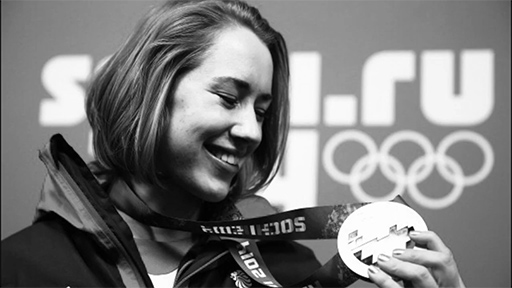2 Case study 1: Lizzy Yarnold
In the next activity you will watch a video about Olympic skeleton champion Lizzy Yarnold’s [Tip: hold Ctrl and click a link to open it in a new tab. (Hide tip)] retirement from sport and her transition into life after sport.
Activity 2 Lizzy Yarnold: preparing early reaps positive rewards
Watch the video below in which Lizzy Yarnold talks about her journey towards retirement and then answer the following questions.
- Why did Lizzy feel it was beneficial to be in education alongside training and competing?
- What did she do during her sabbatical?
- When did she start thinking about retirement?
- What advice did she offer to other elite athletes about retirement?

Transcript: Video 2
[MUSIC PLAYING]
[TEXT ON SCREEN: Lizzy Yarnold is Great Britain’s most successful ever Winter Olympian who won Skeleton gold at the 2014 and 2018 Winter Olympic Games. At the start of her career, she combined her training with studying for a degree at university.]
[TEXT ON SCREEN: Following Sochi 2014, Lizzy won the European Championship in 2015, but in September of that year announced she was taking a sabbatical from the sport.]
[TEXT ON SCREEN: Lizzy returned to Skeleton in 2016. At the PyeongChang Olympics in 2018, she became the first British athlete in history to retain their Olympic title at a Winter Games.]
[TEXT ON SCREEN: Since retiring, Lizzy has been elected onto the British Olympic Association’s Athletes’ Commission. She is also a frequent speaker at schools and conferences and is a #More2Me Champion.]
[TEXT ON SCREEN: #More2Me. For more information head to: www.eis2win.co.uk/expertise/performance-lifestyle]
Discussion
- Lizzy felt that studying while still competing helped her to switch off from sport and develop a different part of her identity.
- Lizzy effectively had two periods of her life when she left sport – her sabbatical (break) inbetween her two Olympic titles, and her retirement. During her sabbatical she wanted to do something different and so she registered on an Open University course.
- In the video she said she started to think about retirement four years before she actually retired, which allowed her to work with her performance lifestyle advisor to plan for life after sport in advance. Lizzy chose to retire but had she been forced to retire early (e.g. due to injury) she would have been prepared.
- The advice that Lizzy gave other athletes was to talk to other athletes and to a performance lifestyle advisor (or another person who can provide support). These are both strategies that were suggested in Section 1.
Lizzy Yarnold’s journey into a life after sport appears to be a very positive one. Next you will look at another athlete who had a positive experience.
